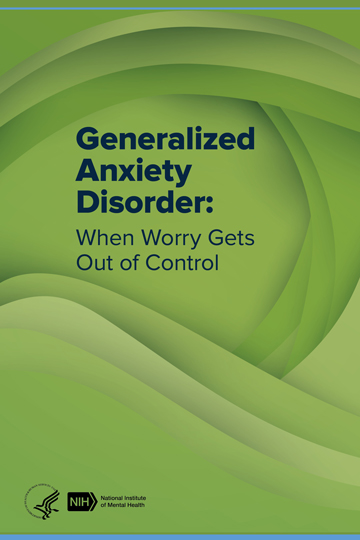What are Symtoms of Anxiety
Anxiety is a normal emotion that everyone experiences at one point or another. It’s the feeling you get when you’re faced with a situation that is stressful or dangerous. When your brain perceives a threat, it triggers the ‘fight or flight’ response.
This response causes physical changes in your body, such as an increase in heart rate and breathing. These changes help you to deal with the threat. However, if you experience anxiety on a regular basis, it can be difficult to cope.
Symptoms of anxiety can include: feeling restless or irritable, having trouble sleeping, sweating, trembling or shaking, feeling short of breath, heart palpitations and dizziness. If you are experiencing any of these symptoms on a regular basis, it’s important to speak to your GP.
Anxiety is a normal human emotion that everyone experiences at one point or another. However, some people experience anxiety on a more regular basis and it can become disruptive to their lives. When this happens, it’s important to understand the symptoms of anxiety so you can get the help you need.
The most common symptoms of anxiety include: feeling restless or on edge, having trouble sleeping, feeling irritable or easily overwhelmed, having difficulty concentrating, sweating or feeling shaky. If you’re experiencing any of these symptoms on a regular basis, it’s important to talk to your doctor or a mental health professional. They can help you determine if your anxiety is something that needs to be treated and develop a plan to address it.
Symptoms of Anxiety
How Do You Know If Your Anxiety?
If you’re experiencing anxiety, you may feel like your mind is racing, have difficulty concentrating or sleeping, feel irritable or on edge, and have increased physical symptoms like headaches or stomachaches. You might also notice that you’re avoiding things that make you anxious.
Anxiety can be a normal reaction to stress.
It can help you deal with a difficult situation by making you more alert and focused. But when anxiety is constant or overwhelming, it can interfere with your daily life.
There are different types of anxiety disorders, including generalized anxiety disorder, panic disorder, social anxiety disorder, and specific phobias.
If you’re having trouble functioning at work or school, or if your anxiety is impacting your relationships, it’s important to seek professional help. A therapist can help you identify the source of your anxiety and develop coping strategies.
What Does an Anxiety Attack Feel Like?
An anxiety attack can feel like a sudden and intense feeling of fear or panic. You may feel like you can’t breathe, your heart is racing, or you might even feel like you’re going to pass out. These feelings can last for several minutes or longer.
An anxiety attack can happen at any time, even if you’re not feeling anxious.
What is the Main Cause of Anxiety?
Anxiety is a normal emotion that we all experience at different times in our lives. It’s what we feel when we’re worrying about something that might happen in the future. For some people, anxiety can be a very intense and debilitating feeling that can make it hard to function in everyday life.
There are many different things that can cause anxiety, but one of the main causes is stress. Stress comes from both good and bad experiences. It can be caused by things like starting a new job, getting married, or having a baby.
It can also be caused by things like losing a job, going through a divorce, or dealing with the death of a loved one. Some people have an innate tendency to worry more than others, and this can also contribute to anxiety. When you add up all of these factors, it’s no wonder that so many people struggle with anxiety on a daily basis!
What are 8 Symptoms of Anxiety?
Anxiety is a normal emotion that we all experience from time to time. It’s what we feel when we’re worried or nervous about something. However, for some people, anxiety can become so severe that it interferes with their daily lives.
If you’re experiencing symptoms of anxiety that are preventing you from living your life the way you want to, it’s important to seek help from a mental health professional. Here are 8 symptoms of anxiety:
1. Feeling restless or on edge: If you’re feeling like you can’t sit still or relax, this may be a symptom of anxiety.
You may feel like you have to keep moving in order to relieve your tension and worry.
2. Difficulty concentrating: When you’re anxious, your mind may race and it can be hard to focus on anything else. This can make it difficult to complete tasks at work or school, and even just carry on a conversation with someone.
3. Feeling irritable: Anxiety can make you short-tempered and easily annoyed by things that wouldn’t normally bother you.
4. Muscle tension: Do you find yourself constantly clenching your jaw or fists? Or maybe you have headaches or back pain due to muscle tension caused by anxiety.
5. Trouble sleeping: It’s common for people with anxiety to have difficulty falling asleep or staying asleep through the night. This can leave you feeling exhausted during the day which only makes your anxiety worse..
Insomnia caused by anxiety can create a vicious cycle where the lack of sleep makes your anxiety worse which then makes it even harder to sleep! 6 . sweating , trembling , nausea : Physical symptoms are also common in people with anxiety .
You may find yourself sweating , shaking , or feeling nauseous when anxious . 7 . Avoiding situations that trigger anxiety : If your symptoms are bad enough , they may cause you to start avoiding certain situations altogether . For example , if driving causes panic attacks , then someone with severe driving-related anxiety will avoid driving as much as possible . 8 . Panic attacks : A panic attack is a sudden onset of intense fear or discomfort that reaches its peak within minutes . People often describe them as feeling like they’re “going crazy” or “having a heart attack .” These physical and psychological symptoms combined can be extremely debilitating and make it hard to function in day-to-day life .

Credit: www.nimh.nih.gov
Symptoms of Anxiety Attack
Anxiety attacks can be extremely debilitating, leaving you feeling panicked and out of control. While everyone experiences anxiety at some point in their lives, an anxiety attack is a sudden and intense episode that can leave you feeling like you’re in danger. Symptoms of an anxiety attack can include racing heartbeat, shortness of breath, sweating, trembling, and dizziness.
If you experience any of these symptoms, it’s important to seek medical help immediately as they can indicate a more serious condition.
Physical Symptoms of Anxiety
Anxiety is a mental health condition that can cause physical symptoms. These physical symptoms can be mild or severe, and they can vary from person to person. Some people with anxiety may only experience a few physical symptoms, while others may experience many.
Physical symptoms of anxiety can include:
• feeling tense or jumpy
• having a racing heart or rapid heartbeat
• sweating
• trembling or shaking
• feeling short of breath or like you can’t catch your breath
Symptoms of Anxiety And Depression
Anxiety and depression are two of the most common mental health conditions. They can have a big impact on your life, making it hard to cope with everyday tasks. It’s important to be aware of the signs and symptoms of both anxiety and depression, so you can get the help you need.
Signs and symptoms of anxiety can include:
• feeling restless, wound up or on edge
• feeling tired all the time
• having trouble sleeping or sleeping too much
Anxiety Treatment
If you’re struggling with anxiety, know that you’re not alone. Anxiety disorders are the most common mental health condition in the United States, affecting 40 million adults. While there is no one-size-fits-all treatment for anxiety, there are many effective options available.
With the help of a mental health professional, you can find a treatment plan that works for you.
There are a number of different types of anxiety disorders, each with its own set of symptoms. The most common include generalized anxiety disorder (GAD), social anxiety disorder (SAD), and panic disorder.
Symptoms can range from mild to severe and may include feeling restless or irritable, having difficulty concentrating, feeling like your mind is going blank, experiencing muscle tension, sweating or heart palpitations, and avoiding situations that trigger your anxiety.
While medication can be an effective treatment for some people with anxiety disorders, it’s not right for everyone. Some people prefer to avoid medication due to concerns about side effects or because they prefer natural approaches.
If you’re interested in pursuing a natural approach to treating your anxiety, there are a number of options to consider. These include exercise, relaxation techniques such as mindfulness meditation or yoga, and therapy.
Exercise is a great way to reduce stress and improve your mood.
It releases endorphins that have mood-boosting effects and can help you feel calmer overall. A moderate amount of exercise is the key – too much can actually increase anxious feelings in some people. Relaxation techniques such as mindfulness meditation and yoga can also be helpful in reducing stress and promoting calmness.
Therapy provides an opportunity to talk about your anxieties with someone who can provide support and guidance in learning how to manage them effectively .
If you’re struggling with anxiety , reach out for help . There are many effective treatments available that can help you feel better and live a fuller life .
Stress And Anxiety Symptoms
Stress and anxiety are two of the most common mental health issues that people face today. They can have a profound effect on your mood, energy levels, and overall well-being. While everyone experiences stress and anxiety at different times and to different degrees, there are some common symptoms that tend to be associated with these conditions.
If you’re feeling overwhelmed by stress or anxiousness, it’s important to understand the signs and symptoms so that you can seek out treatment. Here are some of the most common stress and anxiety symptoms:
1. Feeling tense or “on edge” all the time
2. Difficulty sleeping or restless sleep
3. Fatigue or low energy levels
4. irritability or easily angered
5. Muscle tension or headaches
Types of Anxiety
Anxiety is a normal emotion that we all experience at some point in our lives. It’s what we feel when we’re worried or nervous about something. But for some people, anxiety can be much more than just an occasional feeling.
It can be a chronic condition that affects their daily life. There are different types of anxiety disorders, each with its own symptoms and treatment options.
Generalized Anxiety Disorder (GAD) is the most common type of anxiety disorder.
People with GAD worry excessively about everyday things like health, work, family, and money. They may have trouble sleeping and tend to feel tense and on edge all the time. GAD can make it hard to concentrate and carry out everyday activities.
Social Anxiety Disorder (SAD) is another common type of anxiety disorder. People with SAD feel extremely anxious and self-conscious in social situations, such as meeting new people or talking in front of others. They may avoid social activities altogether or only do them with great difficulty.
SAD can make it hard to keep up relationships and succeed at work or school.
Panic Disorder is characterized by sudden, unexpected panic attacks followed by long periods of worry about having another attack or what could happen if one did occur. People with Panic Disorder may also have physical symptoms such as a pounding heart, sweating, trembling, shortness of breath, chest pain, or dizziness during a panic attack.
Panic Disorder can make it hard to leave the house or even feel safe in familiar surroundings..
Specific Phobias are intense fears about specific objects or situations such as heights, flying, snakes, dogs, clowns, enclosed spaces (agoraphobia), blood/injections/medical procedures etc..
People with phobias usually go out of their way to avoid whatever trigger their fear..
Obsessive-Compulsive Disorder (OCD) involves unwanted and intrusive thoughts (obsessions) that lead to repetitive behaviors (compulsions). Common obsessions include fear of contamination/germs; needing things to be symmetrical or in order; excessive focus on religion; preoccupation with sex/violence/death etc.. Common compulsions include excessive handwashing; cleaning; counting; checking doors/appliances etc.; hoarding; ordering items etc.. OCD can severely affect a person’s ability to function at work or school and maintain healthy relationships..
High Anxiety Symptoms
If you’re feeling anxious, it’s important to know that you’re not alone. Anxiety is a very common emotion that we all experience at one time or another. For some people, anxiety can be a regular part of life and can even be debilitating.
There are many different types of anxiety disorders, each with their own unique set of symptoms. Here are some of the most common symptoms of high anxiety:
1. Feeling constantly on edge or nervous
2. Having difficulty concentrating or focusing
3. Experiencing racing thoughts or an inability to think clearly
4. Feeling restless or irritable
5. Having muscle tension or headaches
6. Struggling to sleep due to worry or stress
Anxiety Symptoms in Women
Anxiety disorders are the most common mental health problem in the United States, affecting 40 million adults. Women are twice as likely as men to be affected by anxiety disorders, with some estimates suggesting that up to one in five women will experience an anxiety disorder at some point in their lives.
There are a number of different types of anxiety disorders, each with its own set of symptoms.
However, there are some common symptoms that tend to be experienced more frequently by women with anxiety disorders. These include:
1. Constant worry and rumination: Women with anxiety disorders often find themselves worrying about things that might happen in the future or dwelling on past events.
This can lead to difficulty concentrating and sleeping, as well as feeling irritable or on edge all the time.
2. Physical symptoms: Anxiety can manifest itself in physical ways, such as dizziness, nausea, trembling or shaking, sweating, and an increased heart rate. These physical symptoms can make it difficult to carry out everyday activities and may cause people to avoid situations where they might feel anxious (such as driving or public speaking).
3. Panic attacks: A panic attack is a sudden onset of intense fear or discomfort that peaks within minutes and typically includes physical symptoms such as accelerated heart rate, shortness of breath, chest pain, and dizziness. Panic attacks can be extremely frightening and may lead people to avoid situations where they think an attack could occur (such as being in enclosed spaces).
4. Obsessive-compulsive behaviors: Some women with anxiety disorders develop obsessive-compulsive behaviors (OCD) in an attempt to control their worry or alleviate their distress.
OCD behaviors can include excessive hand-washing, counting or organizing objects obsessively, hoarding items, or repetitive thoughts or actions (such as checking the locks on doors multiple times).
Conclusion
Anxiety can manifest in many ways, but there are some common symptoms that tend to be experienced by people who suffer from anxiety disorders. These symptoms can include feeling restless or on edge, hypervigilance, easily startled, having difficulty concentrating, and irritability. Physical symptoms such as sweating, racing heart, trembling, and shortness of breath are also common in people with anxiety disorders.
If you experience any of these symptoms on a regular basis, it’s important to talk to a mental health professional to see if you might be suffering from an anxiety disorder.




